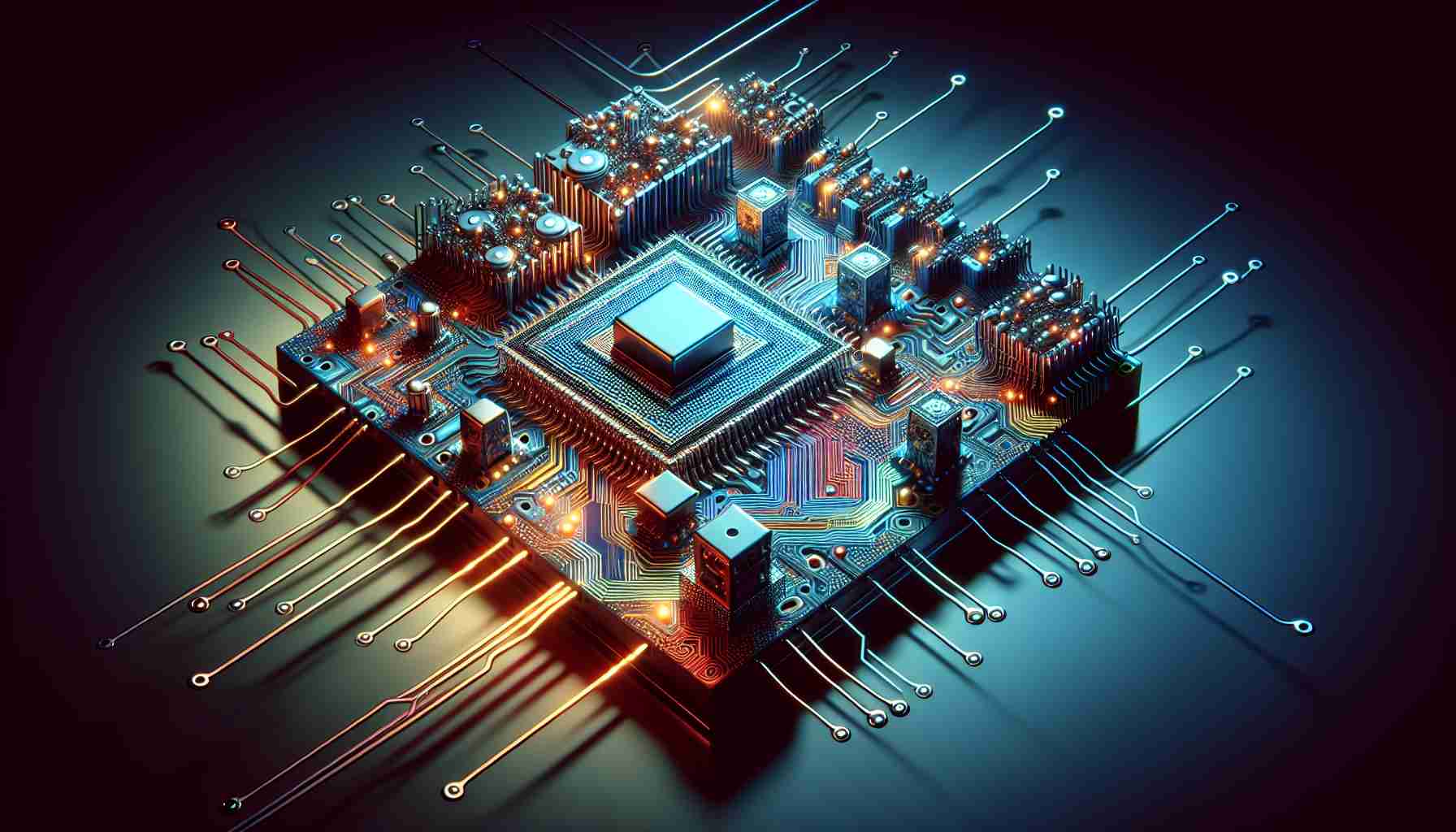Artificial intelligence (AI) and human thought may both operate on electricity, but that’s where the similarities end. While AI relies on silicon and metal circuitry, human cognition arises from complex living tissue. The fundamental differences in architecture between these systems contribute to the inefficient nature of AI.
Current AI models run on conventional computers, which store and compute information in separate components, resulting in high energy consumption. In fact, data centers alone account for a significant portion of global electricity use. However, scientists have long sought to develop devices and materials that can mimic the brain’s computational efficiency.
Now, a breakthrough by a team of researchers led by Mark Hersam at Northwestern University brings us closer to achieving this goal. They have redesigned the transistor, a fundamental building block of electronic circuitry, to function more like a neuron. By integrating memory with processing, these new moiré synaptic transistors reduce energy consumption and enable AI systems to go beyond simple pattern recognition.
To accomplish this, the researchers turned to two-dimensional materials with unique atomic arrangements that create mesmerizing patterns called moiré superstructures. These materials allow for precise control of electrical current flow and can store data without a continuous power supply due to their special quantum properties.
Unlike previous attempts at moiré transistors, which only worked at extremely low temperatures, this new device functions at room temperature and consumes 20 times less energy. While its speed has yet to be fully tested, the integrated design suggests that it will be faster and more energy-efficient than traditional computing architecture.
The ultimate goal of this research is to make AI models more like the human brain. These brainlike circuits can learn from data, establish connections, recognize patterns, and make associations. This capability, known as associative learning, is currently challenging for traditional AI models with separate memory and processing components.
By utilizing the new brainlike circuitry, AI models can distinguish between signal and noise more effectively, enabling them to perform complex tasks. For example, in self-driving vehicles, this technology can help AI pilots navigate challenging road conditions and differentiate between real obstacles and irrelevant objects.
While there is still work to be done in developing scalable manufacturing methods for these neuromorphic transistors, the potential for more efficient and powerful AI systems is promising. By bridging the gap between AI and human cognition, this research opens up exciting possibilities for the future of artificial intelligence.
Artificial intelligence (AI) refers to the ability of machines or computer systems to perform tasks that typically require human intelligence, such as learning, problem-solving, and decision-making.
Human cognition refers to the mental processes and abilities that allow humans to acquire knowledge, understand, perceive, think, and communicate.
Silicon and metal circuitry refers to the materials and components used in conventional computers to process and transmit electrical signals.
Architecture in this context refers to the structure and organization of a system or device.
Energy consumption refers to the amount of energy used by a system or device to perform its functions.
Data centers are facilities that house computer systems and equipment, including servers and storage, for the purpose of storing, processing, and distributing large amounts of data.
Moiré superstructures are mesmerizing patterns created by the unique atomic arrangements of certain two-dimensional materials.
Quantum properties refer to the properties and behaviors of matter and energy at the atomic and subatomic level, as described by the principles of quantum mechanics.
Pattern recognition refers to the ability of a system or device to identify and distinguish patterns or features in data.
Transistor is a fundamental building block of electronic circuitry, responsible for controlling the flow of electrical current and amplifying or switching signals.
Memory in this context refers to the ability of a system or device to store and retrieve information.
Processing refers to the manipulation and computation of data or information by a system or device.
Associative learning refers to the ability of a system or device to make connections and associations between different concepts or data.
Signal and noise refers to the distinction between meaningful information (signal) and irrelevant or unwanted data or interference (noise).
Scalable manufacturing methods refer to processes and techniques that can be easily expanded or adapted to produce larger quantities of a product or device.
Neuromorphic transistors are transistors designed to mimic the architecture and functionality of neurons in the human brain.
Suggested related link: Northwestern University
The source of the article is from the blog smartphonemagazine.nl

